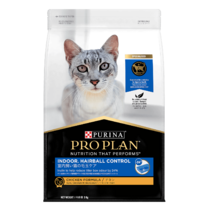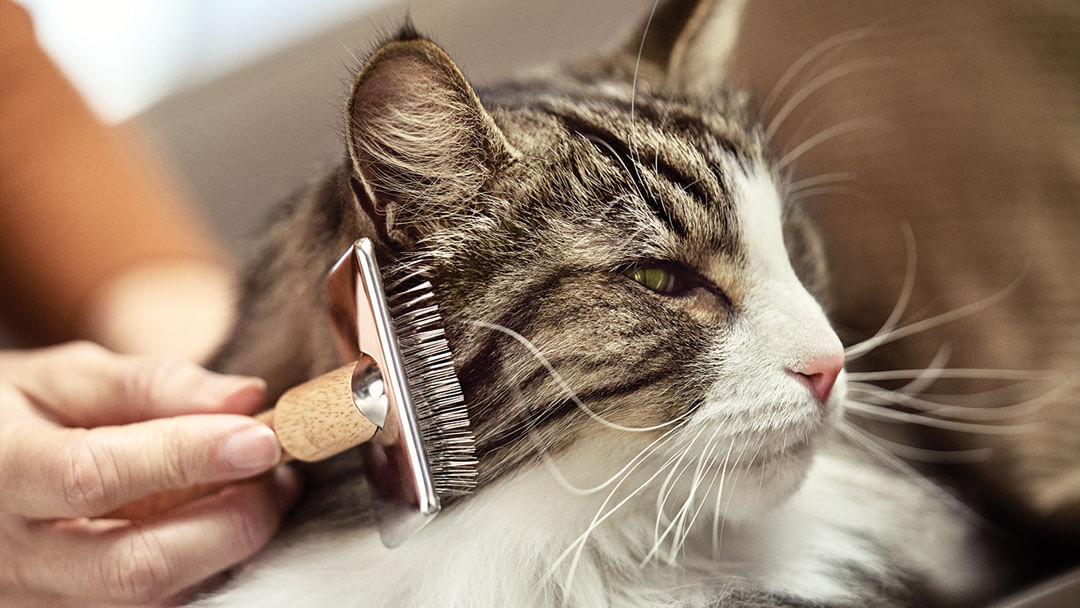

Many cat lovers are searching for an option that will allow them to introduce a cat to their household while minimising their sensitivity to cat allergens.
That’s why many believe 'Hypoallergenic' or allergen-free breeds could provide a solution. However, while some hairless breeds are considered to be the ‘best option’ for people with cat allergen sensitivities, technically, there is no such thing as a 100 per cent Hypoallergenic cat.
If you’re sensitive to cat allergens, having a Hypoallergenic cat that sheds less hair can reduce your chances of being affected on a daily basis, but it won’t totally banish watery eyes, sneezing or sore throats. And contrary to popular belief, it isn’t the hair itself that’s at the heart of the problem.
The primary culprit for 95% of all adults who are sensitised to cat allergens is a protein called Fel d 1¹,². This protein is produced by all cats as a natural part of their physiology – the ‘fel’ is short for feline – and secretes through their saliva or skin. When cats groom themselves, they’re also spreading the Fel d 1 around their hair and skin. The amount of protein released can vary widely among cats and can fluctuate throughout the year.
Male cats produce more of the Fel d 1 allergen than females, while those that have been castrated or sterilised before puberty have a suppressed Fel d 1 production.
Additionally, hairless breeds (such as Don and Canadian sphinxes, Peterbalds and Lycoys) and those with short curly hair (Cornish Rex and Devon Rex) produce slightly less Fel d 1. It’s also much easier to keep the skin of these cats clean.
But regardless of whether they’re a ‘hypoallergenic’ cat breed or not, they will always produce some level of Fel d 1 allergens. Every cat is unique, and so the level of Fel d 1 they produce varies, just as every person's sensitivity level to these allergens is different. If you’re considering getting a cat but are concerned about sensitivity to cat allergens, it is often a good idea for your entire household to spend some time with cats at an adoption centre or at a breeder’s house prior to getting your cat.
There is no ‘one size fits all’ way to manage exposure to cat allergens, but every little bit helps. A combination of management tools often works best to help reduce allergens in your home – though the combination will be unique to your lifestyle. To get you started, we’ve put together some top tips for managing cat allergens in your home that you might find useful.
1. Bonnet, B., Messaoudi, K., Jacomet, F., Michaud, E. Fauquert, J.L., Caillaud, D., & Evrard, B. (2018). An update on molecular cat allergens: Fel d1 and what else? Chapter 1: Fel d1, the major catallergen. Allergy, Asthma and Clinical Immunology, 14, 14. doi: 10.1186/s13223-018-0239-8
2. Davila I, Dominguez-Ortega J, Navarro-Pulido A, Alonso, A.,Antolin-Amerigo, D., Gonzalez-Mancebo, E., Martin-Garcia, C., Nunez-Acevedo, B., Prior, N., …Torrecillas, M. (2018). Consensus document on dog and cat allergy. Allergy, 73(6), 1206-1222. doi:10.1111/all.13391
Featured products
Related articles














